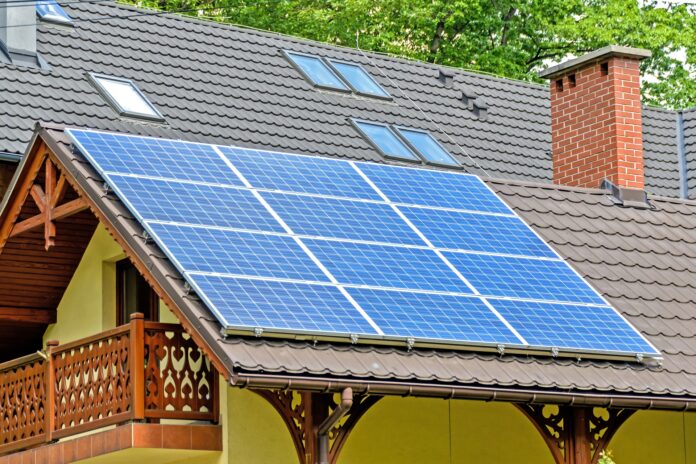As the world continues to focus on finding renewable energy sources, solar power has become a significant area of interest. The use of photovoltaic panels has been increasing, and with it, the need to understand how external factors can affect their performance. One such factor is clouds, which can have a significant impact on the efficiency of photovoltaic panels. In this article, we will explore the effect of clouds on the operation of photovoltaic panels.
Understanding the Basics of Photovoltaic Panels
Before delving into the impact of clouds on photovoltaic panels, it is crucial to understand how they work. Photovoltaic panels, also known as solar panels, convert sunlight into electricity through a process called the photovoltaic effect. The photovoltaic cells in the panels absorb the energy from sunlight, which then frees electrons and creates a flow of electricity.
The efficiency of photovoltaic panels is determined by the amount of sunlight they receive. Ideally, they should be placed in an area that receives ample sunlight, with little to no shading. Any obstruction to sunlight can reduce their efficiency.
The Effect of Clouds on Photovoltaic Panels
Clouds can significantly impact the efficiency of photovoltaic panels, and there are several reasons why this happens.
1. Reduced Sunlight Intensity
Clouds reduce the intensity of sunlight that reaches the photovoltaic panels. The thicker the clouds, the less sunlight can penetrate them. This reduction in sunlight intensity can cause a drop in the voltage and current output of the panels, ultimately reducing their efficiency.
2. Diffused Radiation
When sunlight passes through clouds, it undergoes a process called diffused radiation. Diffused radiation scatters the sunlight, making it less direct and intense. Photovoltaic panels are designed to work best with direct sunlight, so when the sunlight is scattered, their efficiency drops.
3. Temperature Changes
Clouds can also cause temperature changes that can impact the performance of photovoltaic panels. When clouds block direct sunlight, the temperature of the panels drops, and they become cooler. This temperature change can cause a decrease in the efficiency of the panels.
4. Changes in Weather
Clouds are often accompanied by changes in weather, such as rain or snow. These weather changes can cause debris to accumulate on the photovoltaic panels, reducing their efficiency. Additionally, snow accumulation can block sunlight from reaching the panels, further reducing their efficiency.
Mitigating the Impact of Clouds on Photovoltaic Panels
While clouds can have a significant impact on the efficiency of photovoltaic panels, there are ways to mitigate their impact. Here are a few methods that can be employed to minimize the effect of clouds on photovoltaic panels:
1. Over-Sizing the System
One way to mitigate the impact of clouds is to oversize the photovoltaic system. Oversizing the system involves installing additional panels to make up for any loss in efficiency due to clouds. This approach can be costly, but it can help ensure that the system is generating the desired amount of energy, even during cloudy periods.
2. Tilt the Panels
Tilting the photovoltaic panels can also help mitigate the impact of clouds. When the panels are tilted, they can capture more sunlight, even when it is at a low angle due to cloud cover. Tilted panels can also shed snow more easily, ensuring that they continue to generate electricity during the winter months.
3. Use Tracking Systems
Tracking systems can also help mitigate the impact of clouds on photovoltaic panels. These systems use sensors to track the movement of the sun and adjust the position of the panels accordingly. By keeping the panels aligned with the sun, they can to capture as much sunlight as possible, even when there is cloud cover.
4. Use Bifacial Panels
Bifacial panels are photovoltaic panels that can capture sunlight from both sides. These panels can capture sunlight that is reflected off the ground or other surfaces, which can be beneficial during cloudy periods. Bifacial panels can also be tilted, which can further increase their efficiency.
5. Clean the Panels
Regularly cleaning the photovoltaic panels can help ensure that they are operating at peak efficiency. Debris such as dirt, dust, and bird droppings can accumulate on the panels, reducing their ability to capture sunlight. Cleaning the panels can help remove this debris and ensure that they are operating efficiently.
FAQs
Q: Do photovoltaic panels work during cloudy weather?
A: Yes, photovoltaic panels can still generate electricity during cloudy weather, but their efficiency may be reduced.
Q: Can snow accumulation on photovoltaic panels affect their efficiency?
A: Yes, snow accumulation on photovoltaic panels can block sunlight and reduce their efficiency.
Q: How can I ensure that my photovoltaic system is generating enough electricity during cloudy periods?
A: Oversizing the system, tilting the panels, using tracking systems, using bifacial panels, and cleaning the panels regularly can all help ensure that the photovoltaic system is generating enough electricity during cloudy periods.
Conclusion
The impact of clouds on the efficiency of photovoltaic panels cannot be ignored. Clouds can reduce the intensity of sunlight, cause diffused radiation, create temperature changes, and cause debris to accumulate on the panels, all of which can reduce their efficiency. However, there are ways to mitigate the impact of clouds, such as oversizing the system, tilting the panels, using tracking systems, using bifacial panels, and cleaning the panels regularly. By understanding the impact of clouds and implementing strategies to mitigate their effect, we can continue to harness the power of solar energy, even during cloudy periods.
The article was written in cooperation with the experts of mafot.com – installation elements for photovoltaics













